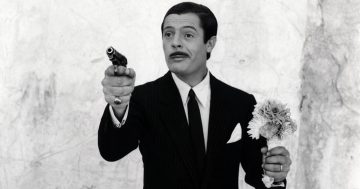Film Art
We could make this publication thanks to small donations. How is 3 minutos de arte supported?
The Three Beginnings of Cinema
Giving order to things is a very human obsession. But instead of deciding which the true beginning of cinema is, let’s mention three.
First beginning of cinema:
In 1888, the French inventor Louis Le Prince generated the first moving image with a cinematographic camera he created. It was a scene of just 1.66 seconds, with barely 20 frames, where some very elegant people walked through the garden of the filmmaker's in-laws in Roundhay (Leeds, England).
Due to this fact, he is considered the "father of cinematography." However, his invention did not really contribute to the commercial development of cinema because it was mysteriously "lost." It was never patented because, in 1890, when Le Prince traveled by train apparently for that purpose, the inventor disappeared inexplicably and nothing more was heard of him.
Second beginning of cinema:
In 1891, Edison patented an invention developed by him and his assistant Dickson: an individual film viewer (as we can see in the image above) called a kinetoscope.
Although its commercialization began in 1894, a year before the Lumiére brothers presented their cinematograph in Paris, its contribution to the development of commercial cinema was small because it was for individual use and quite uncomfortable. So it was immediately surpassed by the French idea.
However, Edison, an ambitious businessman and "patentor" of dubious honesty, when he saw a Lumiére projection in New York, appropriated the idea of projection for the mass public. He adapted his apparatus and protected it with patents, to the point that the Lumiére brothers could no longer enter the United States with their invention.
Thus, Edison dominated the early American film industry. And, finally, he was responsible for the birth of the exodus of cinema to the West Coast (the Hollywood we know today), due to the emigration of all those seeking to escape from his patents, his greed, and his lack of scruples to do business.
Third beginning of cinema:
In 1895, the brothers Auguste and Louis Lumiére gave the first public and commercial cinema performance using the cinematograph of their invention.
The public attended the Salon Indien du Grand Café in Paris and paid an entrance fee. And although this first screening barely raised enough money to pay the rental costs, the public was astonished and bewildered when they saw images such as the workers leaving the factory or the Waterer "Watered” (the train arriving at the station was projected a month later). As we can imagine, from the second day of screening, the long lines of spectators wanting to enter the theater indicated that the cinema was a definite success.
Recommended links:
The First Comedy Film of the History of Cinema.
Georges Méliès and the Magic of the Cinema.
Charles Chaplin and His Character Charlot.
The Golden Age of Hollywood (Classic Hollywood Cinema).
You can also find more material using the search engine.






0 Comments